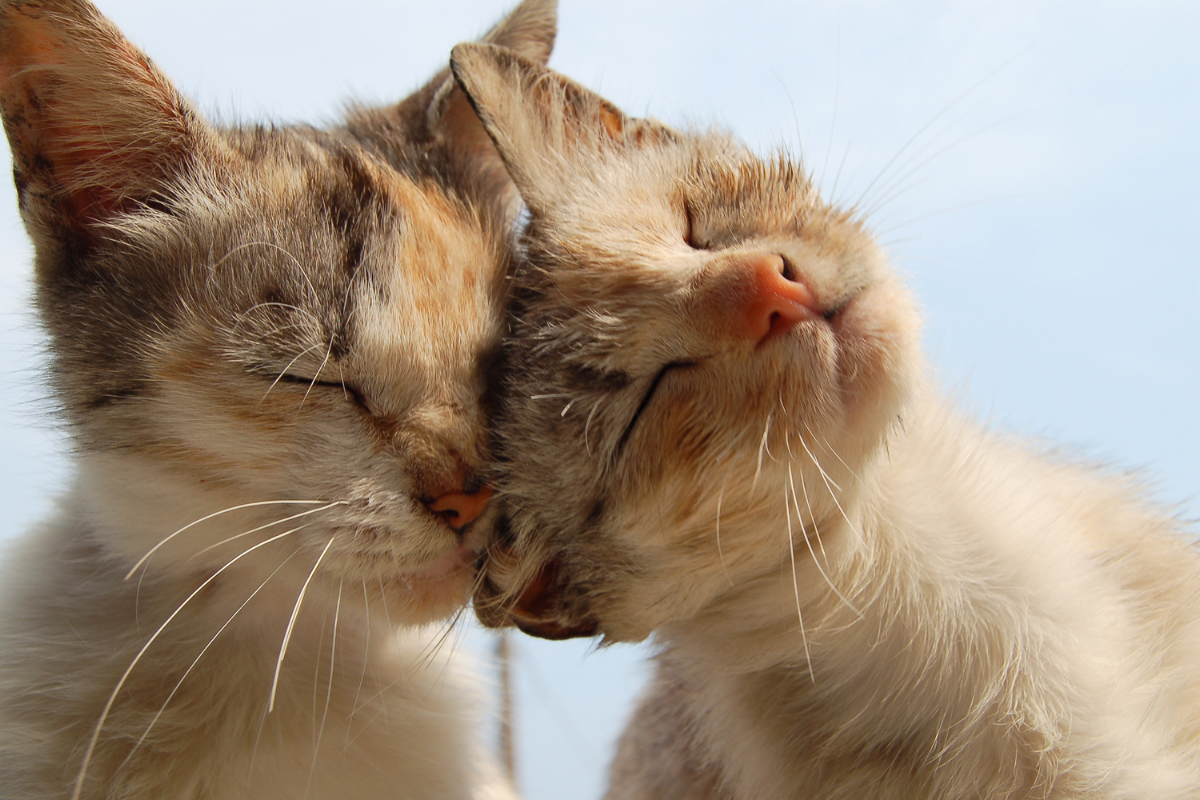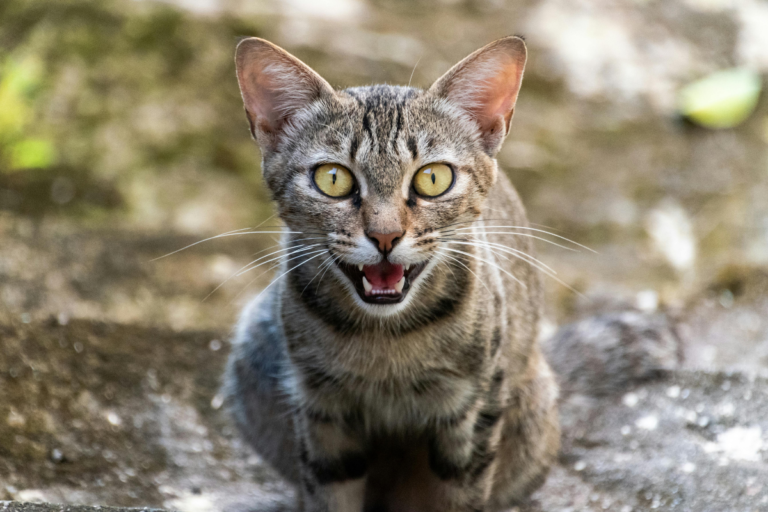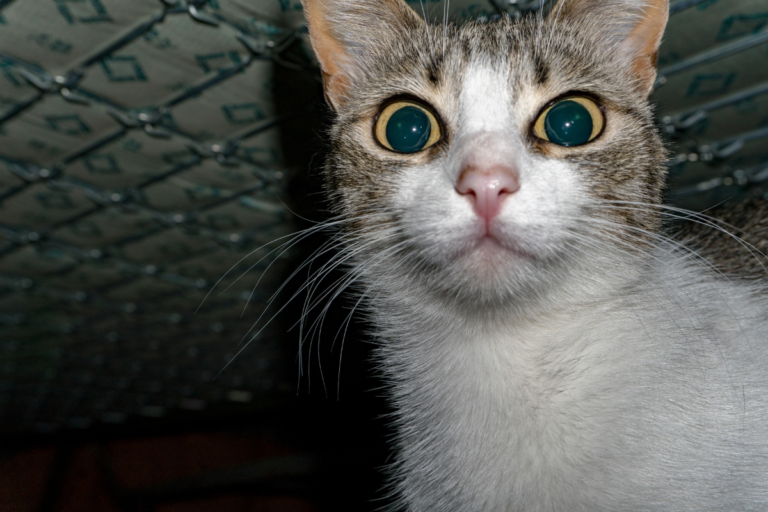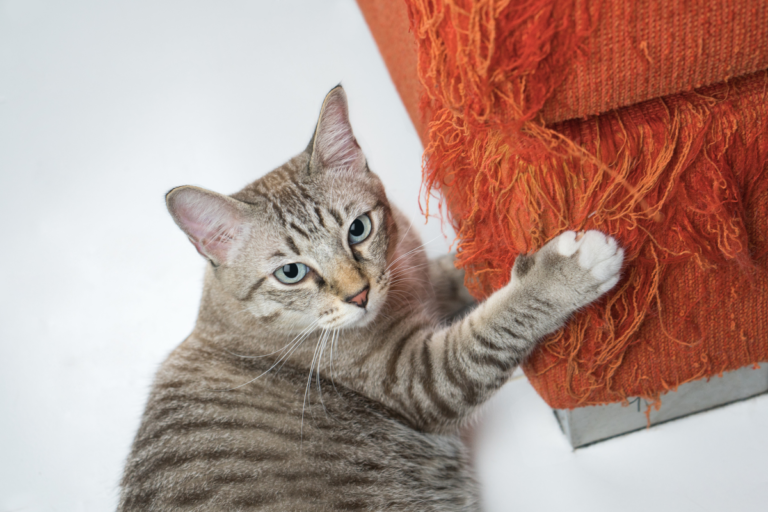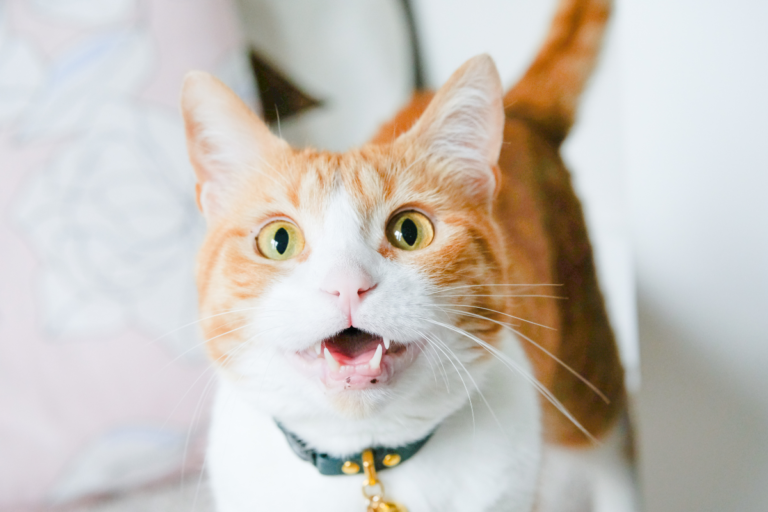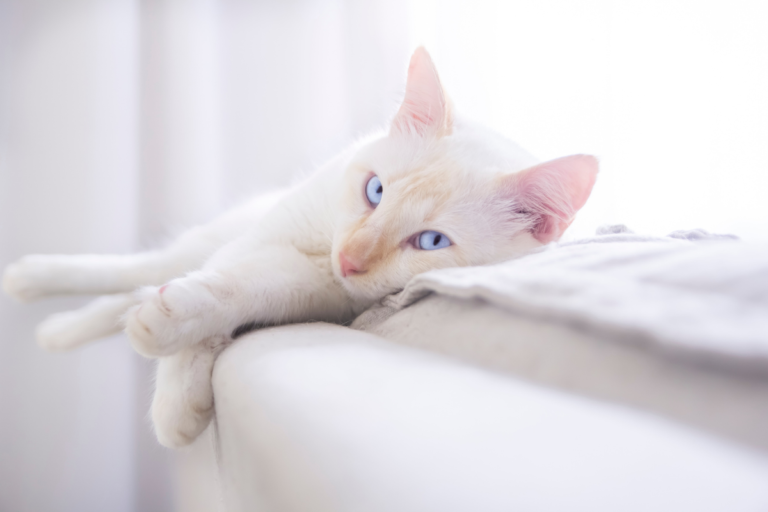Unlocking the Meaning: Cat Head Butting and Bonding Moments
Understanding Cat Behavior
Why Get What Your Cat’s Up To?
So, you’ve got a cat, right? And sometimes their behavior seems from another planet. Figuring out what makes them tick isn’t just handy – it’s the glue to a stronger bond between you and Mr. Whiskers. Knowing why they do what they do can solve problems like flying claws, avoiding the litter box, and those 3 a.m. opera sessions (meowing). It’s a real bummer, but most vet clinics don’t bother much with cat behavior consultations. Truth is, less than half of them even offer these kinds of services, and a measly bunch, less than a third, go the extra mile with training and social events (Irish Veterinary Journal).
Now, here’s the kicker: vets who’ve lived with cats are way better at getting inside kitty brains than those who haven’t walked the feline path. Living with cats teaches you the ropes, helping with stuff like that pesky meowing loud or why they’re chasing their tail.
What We’ve Learned About Cat Habits
Want to know a cat’s secret handshake? Headbutts. Yup, that little nudge is their way of stamping their smell and claiming you as their own clan (Treehugger). Here’s the fun part: cats in shelters who did this trick got adopted quicker (PetMD). It’s their way of saying, “Hey, I’m lovable, take me home!”
And let’s not forget how shaping your kitten’s manners is key to raising a smooth adult cat. Vet behavior experts have cracked the code to dialing down unwanted actions (Journal of Feline Medicine and Surgery, 2018). By diving into these behaviors, you can dodge issues like kitty aggression or that irritating scratching.
| Behavioral Understanding Practices | Percentage |
|---|---|
| Animal Practices Offering Consults | Less than 50% |
| Practices with Training and Socializing | Less than 30% |
So, here’s the lowdown for you cat parents: getting clued up on behaviors like that headbutt can seriously boost your kitty-human vibe. Wanna know more about what makes cats tick or tips to handle those noisy night concerts? Check out our takes on cat psychology and dealing with cat yowling.
Why Cats Love Head-Butting
Ever noticed your fluffy sidekick giving you a gentle (or not-so-gentle) nudge with their head? It’s one of those quirky cat things that can make their behavior just a bit clearer and even help you connect more with your furry buddy.
Why Kitty Wants to Bunt You
So, what’s up with the head-butting, or ‘bunting,’ as the fancy folks call it? Well, there are a few reasons. For starters, cats are pretty territorial. When they bop you with their head, they’re leaving a little scent, marking you as part of their crew (Catster). This is kinda their way of saying, “You’re mine, and that’s comforting to me.”
And it’s not just a territory thing. When cats meet and greet, head-butting along with a little rub-a-dub action is like their version of a group hug. It’s a hello, but also a “Hey, we’re pals!” gesture, whether you’re another cat or their favorite human.
Plus, it’s pure love. When cats really trust you, they’ll head-butt as a sign of affection. It’s their furry way of spreading good vibes and bonding with you.
Cat Talk: What’s That Bonk?
When your cat head-butts, they’re not just randomly bopping around. This simple move is their way of ‘talking’ to you:
-
Mark That Spot: Cats have a thing for leaving their scent on people and places, claiming them in their own weird way (PetMD).
-
Gang Connection: For cats in a colony, mixing scents through head-butting is like having a group handshake. It builds camaraderie and keeps them tight-knit.
-
Look at Me!: Sometimes they head-butt just to get your attention. Whether they want petting, food, or playtime, it’s their way of saying, “Hey, over here!” (PetMD).
-
Calm and Quiet: Rubbing and bunting around is kind of like meditation for cats. It can chill them out and keep them balanced.
If you’re hungry for more cat insights, take a look at our article on cats behavior. Got a grumpy kitty? Our piece on cat aggression might help sort things out. And if your feline pal spends more time under the bed than out and about, check out our tips on turning that around.
| Behavior | Why Cats Do It |
|---|---|
| Marking Territory | Says, “You’re in my inner circle” |
| Social Bonding | Makes friends and keeps ’em |
| Seeking Attention | It’s like, “Hey, notice me!” |
| Self-soothing | Keeps the kitty calm and collected |
Understanding what’s behind those head-bonks can make living with your fuzzball even more rewarding. For more smarts on handling common kitty quirks, swing by our guide on cat psychology.
Symbolism of Cat Head-Butting
Let’s chat about why your feline friend might be giving you a sweet little head-bonk. Known as bunting, it’s more than just a cute quirk—it’s a sign of social bonding and affection.
Head-Butting as Social Bonding
Head-bonking isn’t just about saying hi; it’s a cat’s way of getting friendly and familiar with you. Your cat head-butting you is like them putting a stamp of approval on you, marking you with their scent to show you’re in their circle. This gesture is a way to forge a closer relationship and lay down social boundaries in their world.
In a cat community, you’ll see a lot of head-butting and rubbing against each other—it’s a social glue. When cats rub each other, it’s a bit like saying, “Hey, we’re cool, right?” It’s all about mixing those scents to show they’re one big, happy family.
If you’ve got a house cat, when they’re doing the head-butting thing, they’re basically adopting you into their tribe. It’s their way of saying, “I’m comfy with you, you’re one of us now.” It’s all about the love and trust they’re building with you.
Table: Cat Social Bonding Behaviors
| Behavior | Description |
|---|---|
| Head-Butting | Scent-marking to show connection |
| Allorubbing | Rubbing to create a group scent |
| Grooming | Cleaning each other to reinforce bonds |
| Social Play | Playing together to build social ties |
For more nitty-gritty on cats behavior and their communication, swing by our special section.
Head-Butting for Affection
When your kitty head-butts you, it’s like them shouting, “I love ya, human!” Cats start dispensing these love taps early in life with their moms and carry it on as they grow (Treehugger).
That forehead-to-skin contact lets them rub pheromones on you, making you smell like something they love. It’s most common among cat families—think mom cats and their babies; it keeps their family ties tight.
In your home, every head-butt is like a special “you’re my favorite” moment from your cat. It’s a clear sign that they’re content, safe, and totally relaxed in your company.
If you’re interested in encouraging this kind of behavior, hop on over to our piece on encouraging positive behaviors.
By getting to know the ins and outs of cat head-butting, you can better enjoy these moments and strengthen the love you share with your whiskered pal.
For tips on different feline quirks, check out tabby cat behavior and orange cat behavior.
Behavioral Issues in Cats
Crazy Kitty Scuffles
So your furball has turned into a tiny terror? Don’t sweat it, every cat parent faces the occasional hissy fit. Cats get bratty for a heap of reasons—fear, ouchies, claiming their turf, or simply because life’s not gone their way. Watch for scratchy matches or chompy incidents if they’re thinking of taking over your lounge.
Cats really start strutting their stuff when they hit that two-to-four-year mark. Think of it as their “teen phase,” where every furball thinks it’s king or queen. And if you’ve got a clowder (yep, that’s a fancy word for a bunch of cats), expect a kitty version of Game of Thrones.
| Age Range | Grumpy Gremlin Stage |
|---|---|
| Kittens | Playful troublemakers, nothing serious |
| 2 – 4 Years | Prime time for social and sassy moments |
Chillin’ Your Chomper
Got a little grump monster on your hands? Try these tricks to keep cat fights as rare as getting your hands on a PS5:
- Pump the Brakes on WrestleMania: Ditch using fingers or toes for playtime. Grab a toy instead, and keep your precious digits un-chomped.
- Spread the Love: Who wants a jelly cat? Give each kitty their fair share of snuggle time so they don’t get snooty.
- Mealtime Madness? Not Here: Keep peace by serving meals in totally different spots. No one wants a snack-time showdown.
- Paws-itive Vibes Only: When they’re chill, show ‘em some love with treats or pats. They’ll get the hint that zen’s the way to win house stardom.
- Make Playtime Count: Teach kitties how to play nice from a young age. A little early schooling in What’s Okayville goes a long way (Cat Savant).
If your cat’s still channeling his inner Wolverine, a vet or kitty therapist (yeah, those exist) can help sort it out. They’ve got the know-how to see if it’s more than a growl or if there are other woes like scratching or cats meowing driving you like bananas.
Try these vibes for a chill cat crib. If things don’t mellow, those pros can lend a hand. Keeping your purring crew happy and peaceful is totally doable with a dash of patience and a heap of love.
Special Cases to Consider
Dangerous Head Pressing Behavior
You know that cute little nudge your cat gives you, the one that’s bursting with kitty love? Well, head pressing ain’t that. It’s like night and day. When cats start smooshing their heads against stuff, it’s waving a big red flag that screams something’s up. What’s going on under that fuzzy exterior could be pretty serious.
Head pressing signals a potential SOS from your cat’s nervous system. So, if your buddy’s doing this, it’s time to hightail it to the vet pronto. We’re talking scary stuff—like brain tumors, nasty toxins, or even liver shunts. Ignoring it would be like seeing smoke and asking if someone lit a candle.
Behavioral Problems in Shelter Cats
Cats from shelters, bless their little hearts, often struggle with all sorts of baggage. It’s kinda like when folks at a party get all weird cause they’re nervous, only here it’s a bit more serious. Aggression makes up a whopping 27%! That’s like every fourth cat saying, “Back off, mate!” (Cat Savant).
| Common Behavioral Problems | Percentage (%) of Shelter Cats Showing It |
|---|---|
| Aggression | 27 |
| Litter Box Issues | 15 |
| Excessive Meowing | 10 |
Helping these feline friends requires a soft touch. Here are some pro tips:
- Safe Spaces: Cats dig their own cushy corners—a safe haven free of human shenanigans.
- Routine: Keep the schedule tight. They’ve had enough surprises!
- Interaction: Make it nice and positive. Treats help build bridges!
Remember, time and tenderness are key here. If you hit a wall with your shelter kitty, don’t sweat it; call up the vet or a cat whisperer (you know, a feline behaviorist).
Need a crash course on common cat troubles? Check our guides on cat aggression, cats meowing, and scratching.
Tips for Cat Owners
Whether you’ve been around the cat block a few times or are just stepping into the realm of feline friendships, nurturing good habits in your kitty can transform your bond into something magical. Let me share some savvy advice for promoting those good vibes and when it’s time to call in the big guns.
Encouraging Positive Behaviors
In my experience, getting your cat to act right starts with figuring out what makes them tick. Take head-butting, for instance. It may look cute, but it’s your cat’s way of saying, “You’re in my club now,” by marking you with their special scent. Pretty neat, huh? (PetMD). Here are some ways you can nurture good behavior:
-
Reward the Good Stuff: See your cat doing something cool, like giving you a friendly nudge or making biscuits with their paws? Toss some treats or shower them with affection. This lets them know they’re on the right track.
-
Create Safe Havens: Cats are like us; they need their own chill zones. Make sure they have spots where they can retreat and recharge when the world gets a bit too much.
-
Interactive Play: Keep your cat’s inner hunter satisfied with some playtime magic. Feather toys and laser pointers can be a hoot and help burn off all that kitty energy.
-
Touchy-Feely Bonding: Your cat’s paws-on gestures, like rubbing and kneading, are how they build those heartstrings with you (Catster). Give them some gentle stroking in return to keep that bond tight.
Seeking Professional Advice
Every now and then, even the best efforts don’t stop the mischief. If your feline furball starts acting out with things like grumpiness, potty issues, or non-stop yowling, it might be time for professional guidance.
-
See the Vet: Unusual behavior like pressing their head against things can be a cry for help. Don’t brush it off—get them to a vet stat, as it might be linked to something serious (Catster).
-
Call the Pro: For stuff that just won’t quit, an animal behaviorist could be the answer. They’re pros at handling feline aggression or that charming habit some male cats have of marking their territory.
-
Training Time: Signing up for training could solve a few issues. This is especially handy for shelter cats still trying to get the hang of home life.
-
Go Digital: Online guides covering cat psychology and cats behavior can offer a treasure trove of advice.
| Behavioral Issue | What to Do |
|---|---|
| Head Pressing | Vet ASAP |
| Aggression | Talk to a Behaviorist |
| Litter Box Woes | Vet or Behaviorist |
| Too Much Meowing | Vet or Training Program |
For more gems on reinforcement and handling cat antics, check out articles on tips for straightening curly hair and heat protectant for hair straightening (yup, they’re handy even for our furry topics).
By being proactive and open to expert help, you’re setting the stage for a joyful, purring partnership with your cat.
